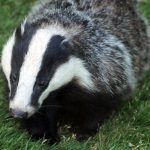About Knowle Wood
Knowle Wood is a popular and valuable resource which sits at the heart of the village. It sits on a east sloping site of approximately seven acres and consists of mainly deciduous broadleaf trees including oak, ash, birch, hawthorn, sweet chestnut, hazel, rowan, elder and holly.
During 2019 a Woodland Management Plan was drawn up and approved by the Parish Council. The Management Plan paves a way forward for the preservation of the natural habitat which exists in the wood and the restoration of lost habitat which will support a wider range of biodiversity. It is important to strike a balance between continued leisure activity access and nature conservation.
Knowle Wood mostly appears to be ± one hundred years old, with the odd tree of more significant age. Knowle Wood adjoins an area of ancient woodland and is part of an Area of Outstanding Natural Beauty (AONB) and close to an SSSI (Site of Special Scientific Interest) and Nature Reserve.
There is a blanket Tree Preservation Order over the whole wood.
Knowle Wood News
Here you will find an update on the latest news.
Woodland Projects
Here you will read about our efforts to meet the challenges of the Knowle Wood Management Plan.
Management Plan
In the event of an emergency you can use the information provided by the two links below to contact people who will be able to help.
Foreword by Dr. Simon Young
Some of you like me have been ‘In lock down’ and ‘shielding’ for many weeks and we longed to go out. One of my favourite places to go to has always been Knowle Wood, close by. Straight away on being more free I continued more wildlife surveys. So far this will be my 8th woodland survey around Fairlight in 7 years. Sadly, now we have no access to most of the old wood and this was reflected in the survey of the whole wood in 2014 we recorded 500 species of plants and animals and now in the Village part only 300. However, there have been highlights in spite of the losses.
When we set up a moth light in a garden on the edge of the wood, in one night even with rain, over 70 species of moth were recoded exactly the same as in 2014 and many of these moths indicate long established woodland. One lady described the night as one of the most exciting in her life. We saw 30 beautiful Elephant Hawk moths and 25 Buff-tips. Extraordinary. The wood is like an oasis which sends many insects into neighbouring gardens. Another garden nearby had a huge Convolvulus Hawk Moth a migrant from France, in another garden a Pine Hawk Moth, all unusual. Some gardens also have Toads and Slow Worms which live and feed along the edge of the wood.
There were 53 species of bird in 2014, now only 32. The last Nightingale, Willow Warbler and Wood Warbler seen and heard in 2014 all need more dense unmanaged Scrub with Bramble, now gone, but what a delight to see nesting Tree Creeper, Gr. Spotted Woodpecker, Jay, Marsh Tit and Song Thrush. Sadly Butterflies declined from 22 in 2014 to 15 now but we need to create more open sun lit glades with flowers like Blackberry to feed these insects and not just a dense dark canopy above. However we found key indicator plants of ‘Ancient Woodland’ that is woodland still here prior to AD 1600. This is also shown by tree lichens growing indicating an Ancient Countryside, other lichens only survive in very clean air quality. We found more wildflowers from 45 to now 56. Some uncommon like Sanicle, a beautiful herb. It’s name derived from the Latin word ‘sanus’ meaning healthy, an old medicinal plant. Also Helleborines a wild woodland orchid found in old Sussex woods.
These woods are ‘our lungs’ both for us to enjoy and see, both for us and our children right on our door step. We must encourage those who look after and manage it. We must try and stick to the main paths and not let our dogs run uncontrolled (mine especially!). Sadly many of the insects we found before have gone and also mammals such as Dormice that need Blackberries to feed on and Honeysuckle to build their amazing nests. The source of our Fairlight Stream starts here with rare Caddis and Mayfly not found down stream and many Freshwater shrimps the greatest number recorded in the whole of this stream. We hope that in the future this village wood will continue to be Re-Wilded, restored and enjoyed by both young and old.
Dr Simon Young is a former lecturer in Ecology. Worked for National Trust with schools and the public helping manage a NNR on the Isle of Wight. Worked in Russia with schools and students on practical pollution monitoring for 12 years and in Africa. Surveyed Wildlife in 8 woods around Fairlight and local streams as a NT volunteer.
Knowle Wood Biodiversity
During 2014 and once again in 2020 Knowle Wood was surveyed and species reports were authored by Dr. Simon Young. These reports went into great detail about what animals, insects, invertibrates, flora and fauna were observed during the survey work. What is noticeable is the changes in biodiversity within the wood during the time between visits. These reports demonstrate how important careful and considered wood management is and how fragile the woods ecosystems are.

